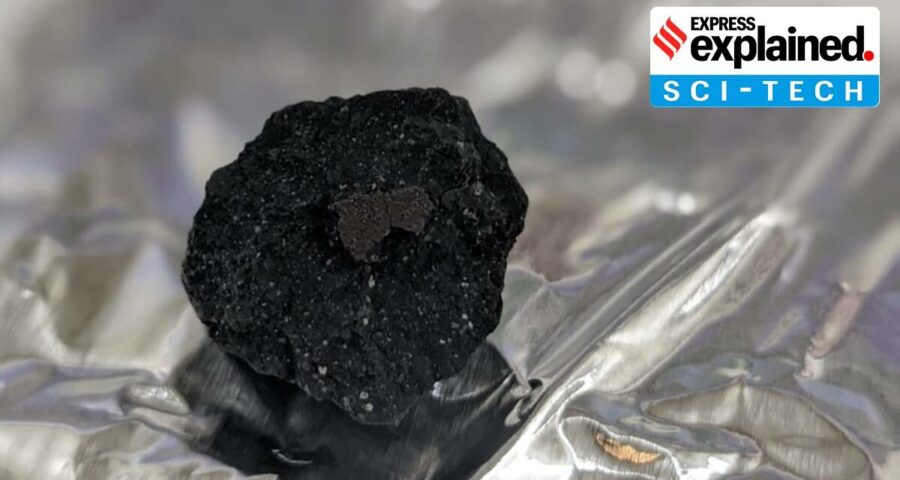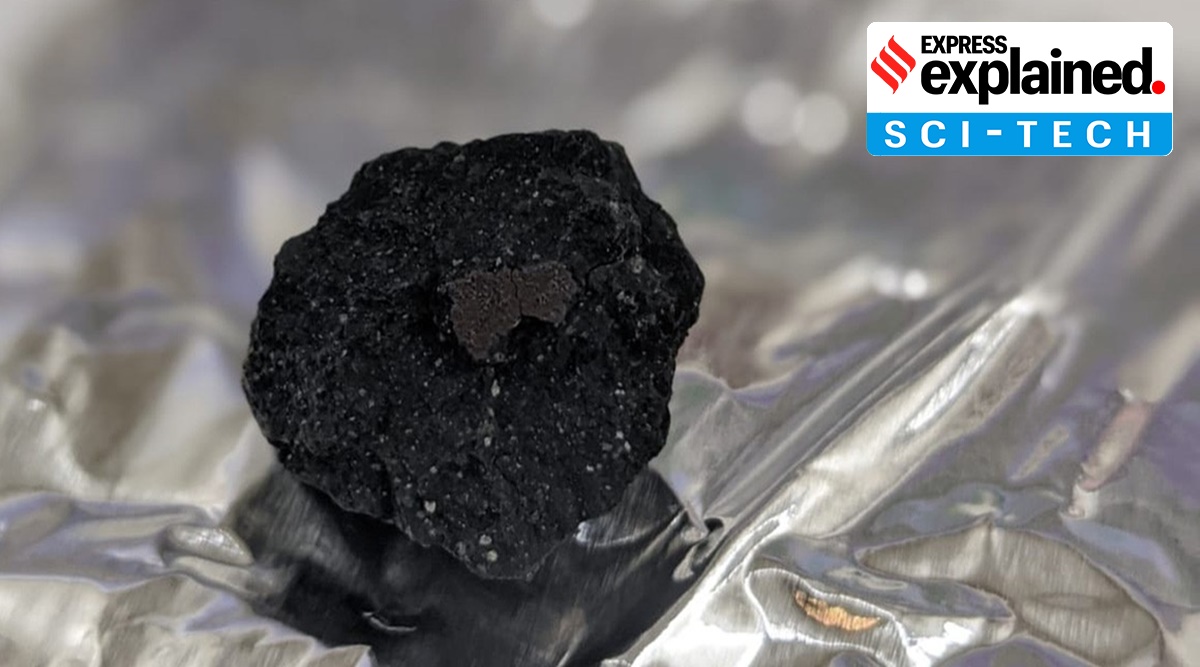The piece of meteorite, which is a 103 gram fragment of black rock resembling coal, was found in a field by one Mira Ihasz and a team from the University of Glasgow.
A piece of the Winchcombe meteorite that touched down in the town of Winchcombe in Gloucestershire in the UK in February 2021 will be displayed at the National History Museum beginning next week.
What is a meteorite?
NASA notes that the difference between a meteor, meteorite and meteoroid is nothing but where the object is. Meteoroids are objects in space that range in size from dust grains to small asteroids. “Think of them as “space rocks,” NASA says. But when meteoroids enter the Earth’s atmosphere they are called meteors. But if a meteoroid enters the Earth’s atmosphere and hits the ground, it is called a meteorite.
How was the meteorite discovered?
The piece of meteorite, which is a 103 gram fragment of black rock resembling coal, was found in a field by one Mira Ihasz and a team from the University of Glasgow. The meteorite landed in the driveway of a house located in Gloucestershire in February and considered “astonishingly rare”.
On February 28, 2021, shortly before 10 pm, a fireball was spotted blazing across the sky in western UK. Hundreds of people reported the flash of light that lasted for about six seconds. The flash was also recorded by doorbell cameras and car dash cams.
What is the significance of this meteorite?
It dates back to the birth of the solar system nearly 4.5 billion years ago and therefore examining it may offer scientists and researchers clues about the beginning of the solar system and maybe even the Earth. Space agencies have launched specific missions to asteroids to be able to study them.
One such example is NASA’s OSIRIS-REx mission that was launched in 2018 with the aim of reaching asteroid Bennu and getting back a sample from the ancient asteroid. The spacecraft is now on its way back to Earth and is bringing with it about 60 grams of the asteroid that will help scientists study the beginnings of the solar system. Another example of such a mission is the Hayabusa2 mission that returned to Earth in December 2020.
Winchcombe is also significant because it is the meteorite to have fallen and recovered from the UK in about 30 years. Further, this type of meteorite is known as a carbonaceous meteorite and out of about 65,000 known meteorite types, only about 1,000 are of this particular type.
Source: Read Full Article


